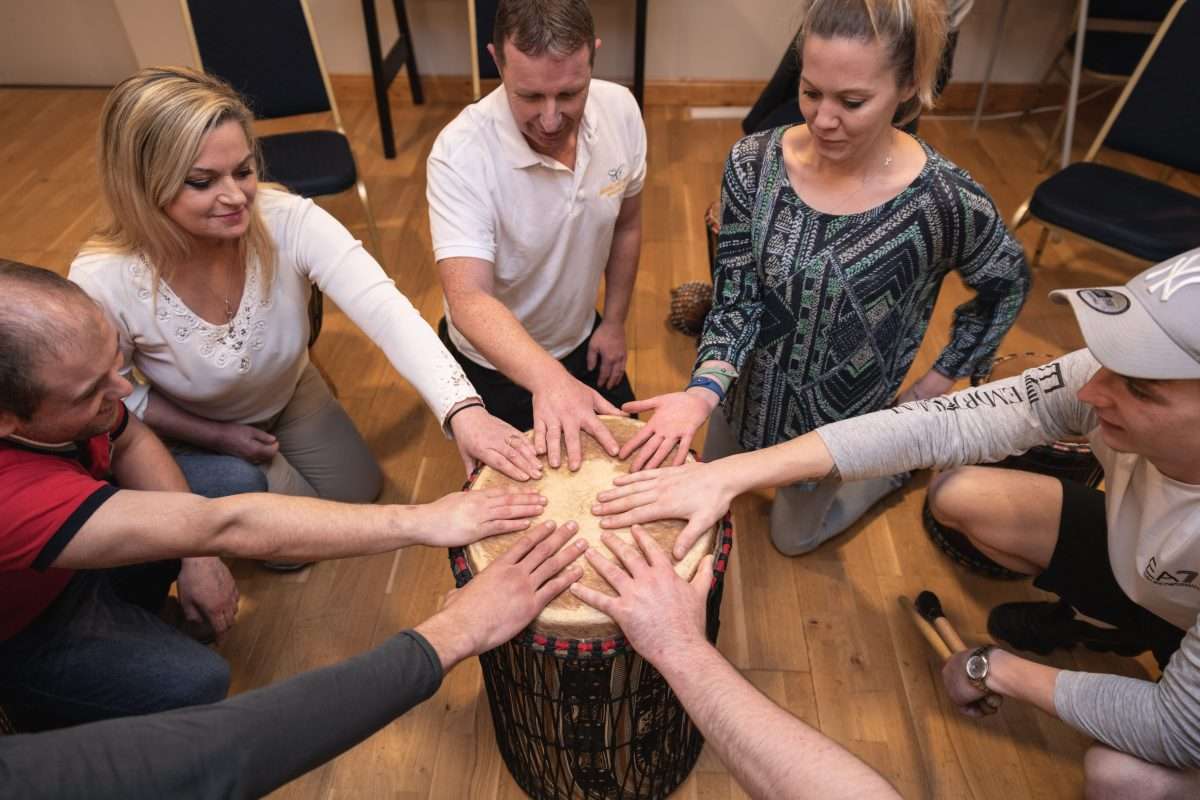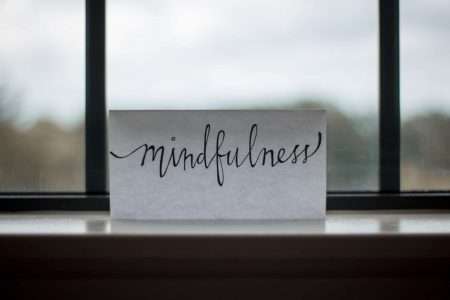Table of Contents
Managing cravings isn’t a test of willpower; it’s a balance of strategy and self-compassion. As you go through recovery, you can begin to understand them better. What are your triggers? What helps and what doesn’t? In this article, we’ll explain the biology behind cravings and mindful techniques that can help you develop strategies to manage them with more confidence.
What Exactly Is a Craving?
Cravings are intense urges and desires that can take over your thoughts and body. They often make you want to seek out the very thing you’re trying to resist — whether it be an addictive behaviour or substance misuse. You might be imagining only the rewarding aspect, unable to concentrate on anything else. Future goals and plans are forgotten as your brain narrows its attention entirely on that one desire.
They vary in strength, but in general, the more you imagine or elaborate on the craving, the more your brain supports the indulgence.
Cravings: A Natural Part of Addiction Recovery
For people with addiction, there often comes a point where cravings change. Instead of enjoying the reward, the cravings become more about seeking relief from the urge itself — a sort of compulsion. So even though you might not get the same effects, your brain’s reward system still believes that the addictive substances or behaviour offer a reward. And when going through withdrawal, the sensation can increase.
Why Do Cravings Happen?
Cravings and compulsions happen because large amounts of dopamine, the neurotransmitter associated with pleasure and reward, are often released when we first engage in an addictive behaviour or substance use. But over time, the effects decrease, leading to tolerance and the desire for more. So whether it’s drug addiction or other behaviour, those memories of pleasure are still strong, making it hard to stop.
Will Cravings Reduce?
Fortunately, the brain is remarkably capable of change. As you begin recovery, your brain begins to rewire itself. It takes time, but addiction neuroscience shows you can form new neural connections and weaken the old ones associated with addictive behaviours.
Part of that recovery process is relearning how to experience pleasure from non-addictive activities, which helps to retrain the brain. This is where practising mindfulness for addiction can also play a helpful role.
Naturally, the process takes time and consistent effort, which means that cravings don’t disappear once you reduce or abstain from the addition. So if a craving pops up, remember that it’s part of the process, learning how to manage it takes time, trial, and error, and they will likely decrease with therapies and time.

Download our Brochure
Common Triggers for Cravings in Addiction Recovery
Understanding your triggers can help you manage and prevent them. Here are some of the most common ones:
Environmental Exposure
The opportunity to use or engage in that behaviour can easily trigger a craving. For example, our cravings to eat often intensify when we’re surrounded by food or see others eating.
With that in mind, cravings may be reduced if you believe it’s unavailable. But if you’re constantly around people or places that remind you of the reward or make it easier to engage, cravings can increase.
Stress and Strong Emotions
Daily stress affects how your brain functions. Specifically, your prefrontal cortex — the part that manages your concentration and judgement.
When we’re stressed, it’s harder to reflect and regulate our behaviour. That’s one of the reasons why the HALT method can help (don’t let yourself get too Hungry, Angry, Lonely, or Tired).
Regularly managing stress and difficult negative emotions through emotional regulation techniques, support groups, mindfulness practices, and self-care can help reduce cravings.
Routine and Habits
Habits form associations in our brains, easily linking activities or emotional states with addictive behaviour. Habits often become automatic, where our bodies respond without us even realising what we’re doing.
For example, if you’re used to smoking every time you get in the car, you’re likely going to think about smoking when you get in the car even when in recovery. You might automatically reach for a lighter once you sit down, without thinking twice.
Your body can also develop a physiological response to the habit, where the expectation of the reward leads to a craving.

How Can Mindfulness Help?
Mindfulness is the practice of feeling fully in the present moment, rather than thinking about the past or future. It can help to create a safe space during addiction recovery, where you can better acknowledge, accept, and manage cravings. Research on mindfulness-based cognitive therapy and mindfulness-based interventions show promising results, and here’s why:
Time to Pause Before Reacting
Being able to pause when a craving hits might give you the time you need to think about how you’d like to respond, rather than reacting automatically. Understanding that it’s a temporary sensation that will pass can become more comfortable in the discomfort can change everything. It might even make it easier to recognise triggers or the early signs that a craving is coming, helping you to take preemptive action.
Better Emotional Regulation
Research on mindfulness training shows that it helps us learn how to regulate our emotions. That means it can allow us to manage stress and strong emotions, which are common triggers for cravings.
Decreased Self-Criticism
Finally, mindfulness exercises also encourage an attitude of non-judgement and compassion, which is essential for long-term recovery. We often experience extreme emotions of frustration when cravings arise, or guilt and shame when we act on the craving. But with a mindfulness practice, we can recognise that this is part of the process, making acceptance and forgiveness easier so that we can move on, rather than spiralling into self-criticism.

Working Together For Your Recovery
7 Mindful Tips for When a Craving Hits
When cravings come, a toolkit of mindfulness techniques can help you learn how to manage them.
1. Observe and Acknowledge the Craving (Without Judgement)
It’s easy to feel afraid, frustrated and angry when a craving hits. But the pressure we put on ourselves to not feel what we’re feeling is often what maintains or exacerbates it.
Learning to acknowledge and accept our sensations, on the other hand, can make it easier to let them pass. So rather than fighting your body, work with it. If self-critical thoughts or intense emotions pop up, remind yourself that you’re only human, and it’s part of the process.
2. Identify the Trigger
Try to think about what might have caused the craving, and any sensations you feel. For example, just acknowledging and naming the sensations in your body can help make you more of an observer. For example, “I feel tightness in my chest, my shoulders are tense.” You can try doing a body scan to notice what’s happening as you experience cravings.
Working to understand what happened to trigger the craving might give you enough of a pause to stop you from reacting automatically.
3. Use a Mindful and Compassionate Mantra
While it might feel strange at first, the point of a mantra is to focus on self-compassion and acceptance when a craving hits. Think of a phrase that feels true for you, like “I’m on a journey of recovery, and this craving is a part of the process. I can learn to accept that cravings will happen and that they will pass.”
Research shows that self-compassion is essential for better mental health, emotional regulation, and recovery. You can also try other activities that focus on compassion, such as a writing exercise or compassion-focused meditation practice.
4. Engage in a Nurturing Stress-Relieving Activity
Redirect your focus to something else that offers you the reward of anxiety relief. Consider making a list of go-to activities for when a craving hits.
For example, leaving wherever you are and going to a park for a walk, putting on your favourite song and dancing, or breaking out a journal or canvas to paint or write freely. All these activities focus on creativity or movement, which can release dopamine and endorphins and relax tension in the body.
5. Try a Sensory Technique
Experiment with different techniques to ground and centre yourself. They can create a space to put you in the present and calm your nervous system, potentially relieving the anxiety of the craving. Here are some common strategies:
- 5-4-3-2-1 grounding. Name five things you see, four you touch, three you hear, two you smell, and one you taste.
- Progressive muscle relaxation. While breathing deeply, start by focusing on your toes. Tense then relax them, slowly moving up your body until you reach your eyebrows and forehead.
- Visualisation. Imagine yourself overcoming the craving. How do you manage it? What do you see? Picture yourself taking the steps to manage it and after, feel the sense of relief as if the craving is over.
- Guided mindfulness meditation. Calming sounds, such as meditation music and a soothing voice, can guide us into the present and regulate our breathing.
- Mindful breathing exercises. Choose from any number of breathwork exercises, like alternate nostril breathing or 4-7-8 breathing, where you breathe in through your nose for four seconds, hold for seven, and slowly exhale through your mouth for eight seconds.
6. Talk to Someone.
If mindful exercises don’t seem to be helping, you might just need the voice of a good friend. Social support is one of the most important factors for mental and physical health Seeing a loved one’s face, for example, has a profound physiological calming effect.
So don’t be afraid to reach out and talk to someone you trust. If you can, try to meet someone in person since this can offer even more benefits than over the phone, or try a video call.
7. Reflect
After the craving has passed, take some time to reflect on what worked and what didn’t. The more information you gain, the better you can prepare for the next craving.
Taking the time to think about the experience, without judgement and self-criticism, can also boost your sense of commitment to recovery.
Celebrate Your Wins
The catchphrase, “Progress, not perfection,” should stay top of mind. Recovery, or any progress in everyday life, is rarely linear. We always go through ups and downs, but acknowledging our efforts and any changes we’ve made, no matter how small, is important. It boosts our sense of self-efficacy — our belief in our ability to succeed.
So take the time to recognise your efforts regularly. That could look like writing one thing daily that you’re proud of. For example, feeling proud of yourself for showing yourself some compassion in a difficult moment, for making the effort to avoid a trigger, or simply for acknowledging.
By recognising your wins, you nourish your sense of self-efficacy and personal growth.

What to Do After Acting on Craving
There should be a new way of referring to acting on cravings instead of “giving in” — because the truth is, recovery is not about being “strong” or “weak”. Cravings, as well as acting on them, are a natural outcome of our circumstances and biology. So instead of viewing them as a failure, consider them for what they are: part of the process.
These moments can also teach us what can help us in the future, and give us ideas for progression. Research shows that relapses are common and that they don’t have to diminish your progress or determination to continue.
Part of what makes acting on a craving feel difficult is the self-blame and criticism that follows. Except, it’s beating ourselves up because of the pressure to “be perfect” that can cause emotional distress. Whereas, accepting the situation with self-compassion and learning from it can make it smoother to move on and continue.
Future Planning
Use your cravings as an opportunity to refine your recovery strategies. Think about what you can do to make things easier on yourself, such as:
- Join mindfulness-based groups. Try different communities that offer tools and strategies for managing stress, like hiking groups, meditation events, yoga classes, or sound baths.
- Practice stress-relieving activities. How can you prioritise a bit of regular self-care in your day? For example, focusing on sleep, movement, nutritious eating, or ways to feel more connected. Studies show that volunteering, for example, can decrease feelings of depression, anxiety, and loneliness.
- Get professional support. Speaking with someone who can empathise and understand your situation can make a world of difference. With personalised guidance from a professional, you can also learn specific coping and mindfulness skills that work for you.
In the end, recovery is a process full of ups and downs, but acting on a craving does not mean failure. Instead, recognise them as part of the journey and an opportunity to learn more about yourself. Going through these experiences works toward developing resilience, and a much-needed sense of acceptance and compassion.
At Smarmore Castle, we recognise the ongoing nature of addiction recovery. Therefore, we maintain support for our patients even once they have completed treatment. Believing firmly in the importance of aftercare, we strive to minimise the possibility of relapse and provide each patient with a personalised care plan tailored to their unique needs as they complete their treatment.
If you’re struggling with recovery and would like to speak to us about additional support options, you can call our Help Centre for more information.

Thousands of Individuals Have Achieved Sobriety Through Smarmore…Join Them Today!
Resources
- https://www.mdpi.com/1660-4601/8/10/4025
- https://www.sciencedirect.com/science/article/pii/S2352853217300342?via%3Dihub
- https://www.ncbi.nlm.nih.gov/pmc/articles/PMC8638539/
- https://www.ncbi.nlm.nih.gov/pmc/articles/PMC3181920/
- https://www.ncbi.nlm.nih.gov/pmc/articles/PMC7186308/
- https://www.ncbi.nlm.nih.gov/pmc/articles/PMC4553654/
- https://link.springer.com/article/10.1007/s40429-021-00372-w
- https://pubmed.ncbi.nlm.nih.gov/17576282/
- https://iaap-journals.onlinelibrary.wiley.com/doi/abs/10.1111/aphw.12127
- https://www.researchgate.net/publication/321687779_The_relationship_between_self-compassion_and_the_risk_for_substance_use_disorder
- https://www.frontiersin.org/articles/10.3389/fncir.2019.00018/full
- https://www.ncbi.nlm.nih.gov/pmc/articles/PMC5928534/
- https://www.ncbi.nlm.nih.gov/pmc/articles/PMC3402448/
- https://www.frontiersin.org/articles/10.3389/fpsyt.2019.00388/full
- https://substanceabusepolicy.biomedcentral.com/articles/10.1186/s13011-021-00347-0


